Originally named the Palazzo, the Colonnade Hotel opened on St. Peter Street in Saint Paul in 1888. The owners chose Palazzo to stress that this would be an upscale property for well-heeled guests. They settled on the name Colonnade after several people had trouble pronouncing Palazzo. Colonnade still felt high-end and matched the theme of the building’s exterior.
The Colonnade opened in 1888 to a crowd of happy residents and visitors. Several new hotels were opening in this part of St. Peter Street, but the Colonnade stood out as a 200-room convention hotel with a large ballroom and an on-site dining room known as the Colonnade Cafe that could accommodate 300.
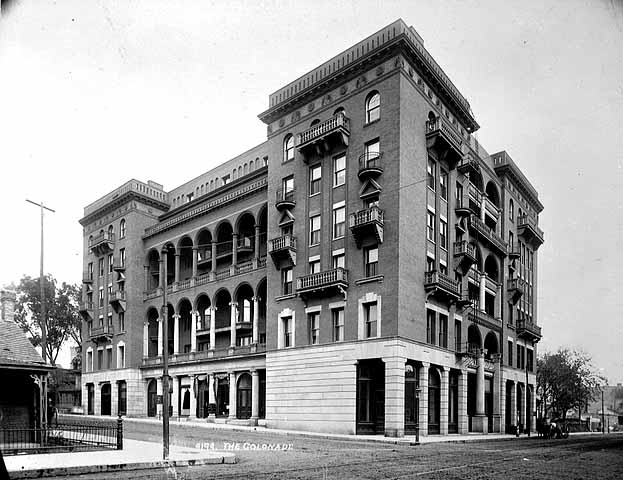
Modern and well-appointed
The unique building was designed and built by Reed and Stem. At the time, the firm was based in Saint Paul and had designed and/or built several trail stations and college campus buildings across the country. Locally, they worked on the Saint Paul Hotel, Saint Paul Auditorium, the Athletic Club building downtown, and the Crane-Ordway building in Lowertown. They got a big break when they were hired to build Grand Central Station in New York City in the 1910s.
The six-story hotel was thoroughly modern, being the first in the city to have electric lights. It also had hot water heating, indoor plumbing, an elevator, and a security system. The lobby had dark mahogany woodwork, archways, mosaic tile floors, crystal chandeliers, a pier mirror, oil paintings, tapestries, and an 1842 square grand piano.
That luxury came at a price, though it was attainable by the middle and upper classes. A room could be rented for between $2 and $10 per day or from $60 to $300 monthly, depending on the unit’s level of service and size.
Just one year after opening, the Colonnade was extensively remodeled, with a new exterior facade and skylight and updated conveniences for visitors and residents inside.
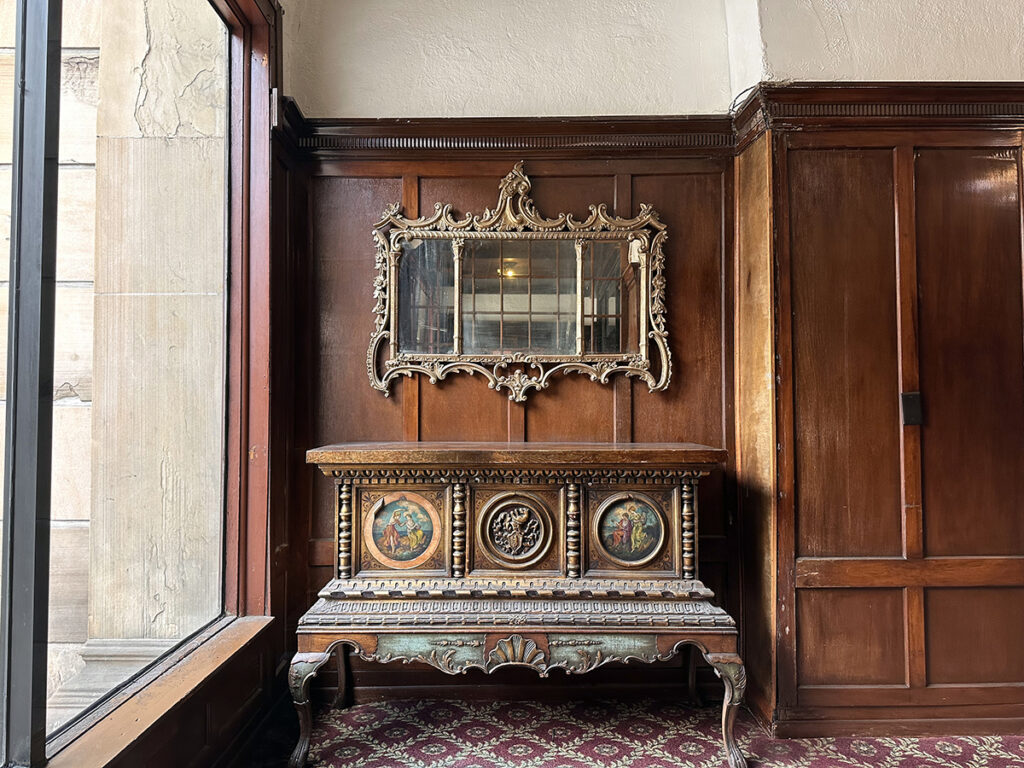
A new beginning
By the 1910s, the hotel became more of a residence hotel with long-term residents. The owners rebranded it as the Alexandria Apartments and then as the Willard Hotel in the 1930s and 1940s. It became the Rex Arms in the late 1940s and reverted back to the Willard Hotel in the mid-1950s.
A devastating fire in 1955 left one dead and three injured, and the building was permanently changed. Its top floor was ravaged by smoke and flames, and the fifth floor was also significantly damaged. The lower floors had been lucky, only suffering slight water and smoke damage that could be cleaned up. Engineers determined that the top two floors could be removed, and the building would remain structurally sound.
While many other buildings built in the late 1800s were being demolished for far less, the fire-ravaged Colonnade would, somewhat unbelievably, have a future.
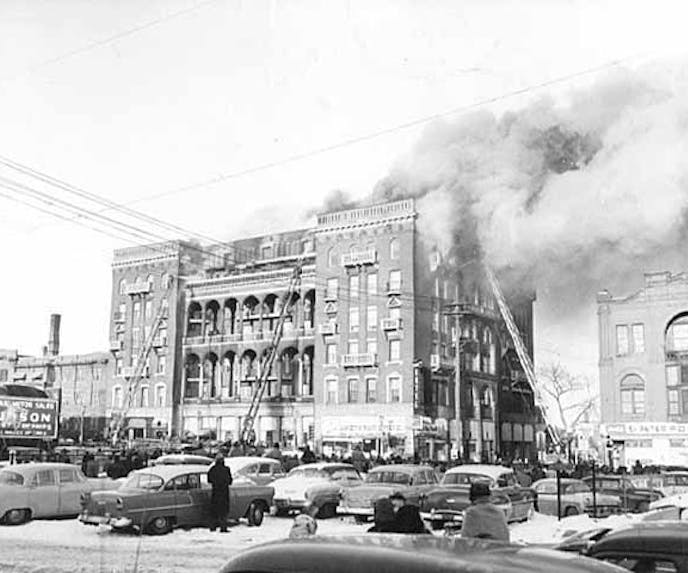
Spared, but for how long?
So the six-story building became a four-story building. The top two floors and a third-tier arcade were (rather unsympathetically) removed. The exquisite decorative details at the top of the building were lost, but a lot of the building’s character remained. Additional storefronts were added to the street level, eating up a lot of the plush public spaces of the former hotel.
By the 1960s, some considered this end of St. Peter to be skid row, and the Colonnade had a reputation for being a flop house. A decade later, the building was vacant, boarded up, and condemned.
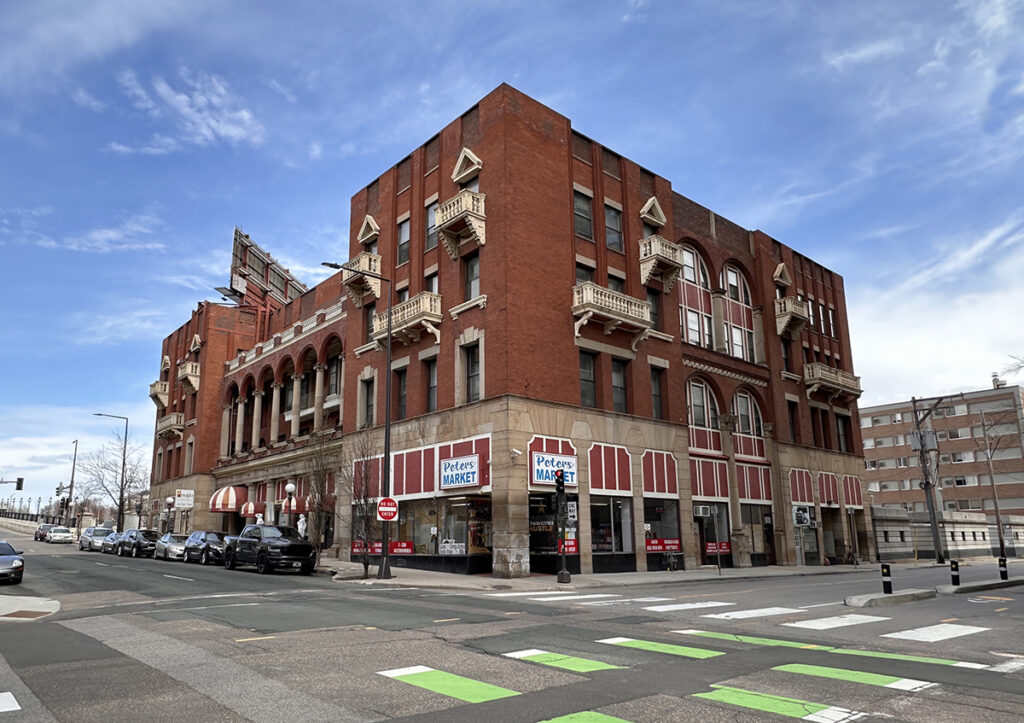
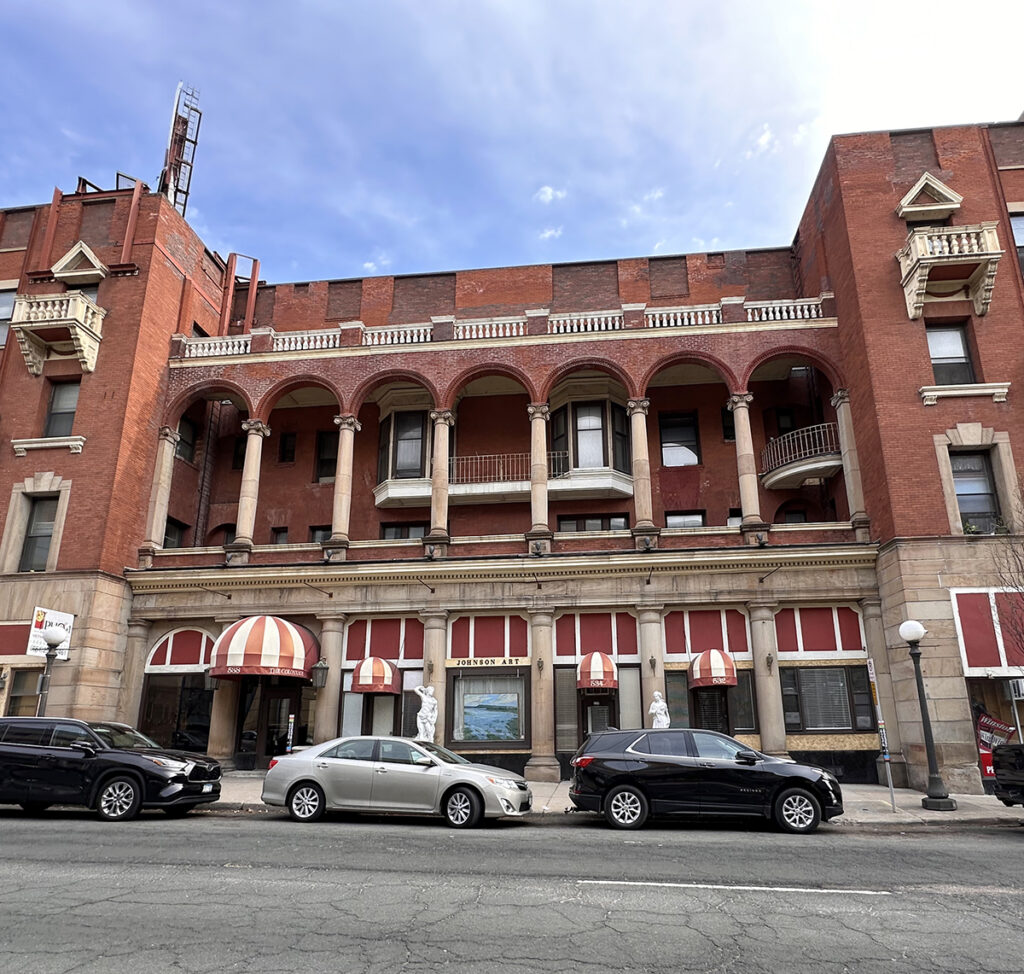
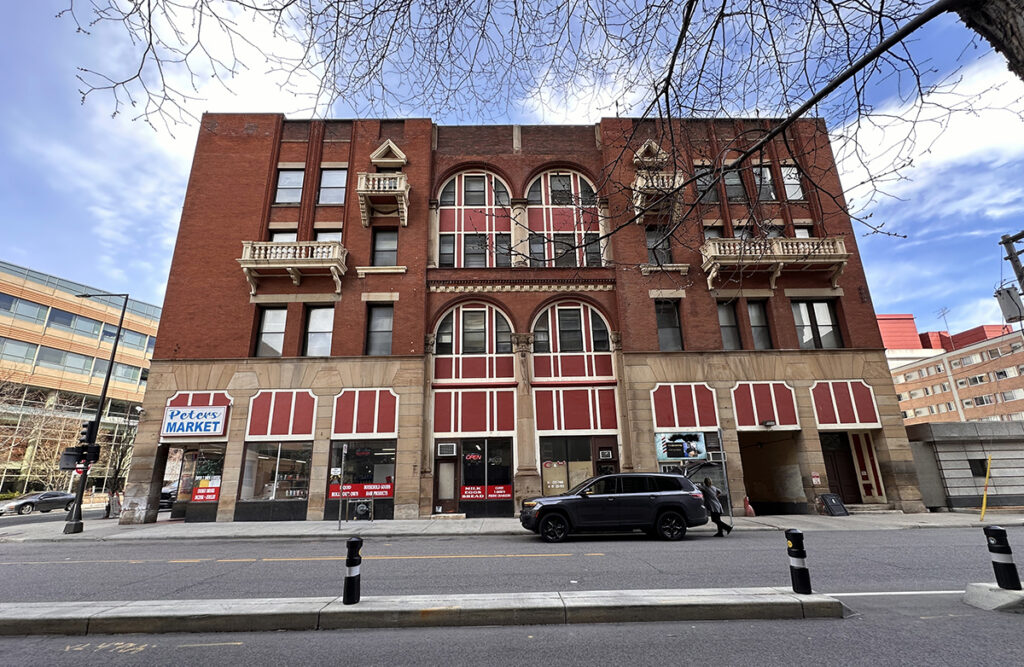
Hiding in plain sight
The Colonnade witnessed most of the buildings around it decay and fall to the wrecking ball. So why is the Colonnade still standing? Some have said it was simply because no one cared enough to demolish it. And that may be the saddest thing I’ve heard someone say about a building.
Thankfully, new owners purchased the building in the late 1970s to rehab it and open it up as apartments again. They kept the interior public spaces as they had always been, with rich mahogany woodwork, antique furnishings, and mosaic tile floors. The flats were modernized with carpet, new appliances, stainless steel sinks, and more.
By the 1980s, the building provided affordable, convenient, and stable housing to many single, working adults. New retail shops and a restaurant opened on the street level.
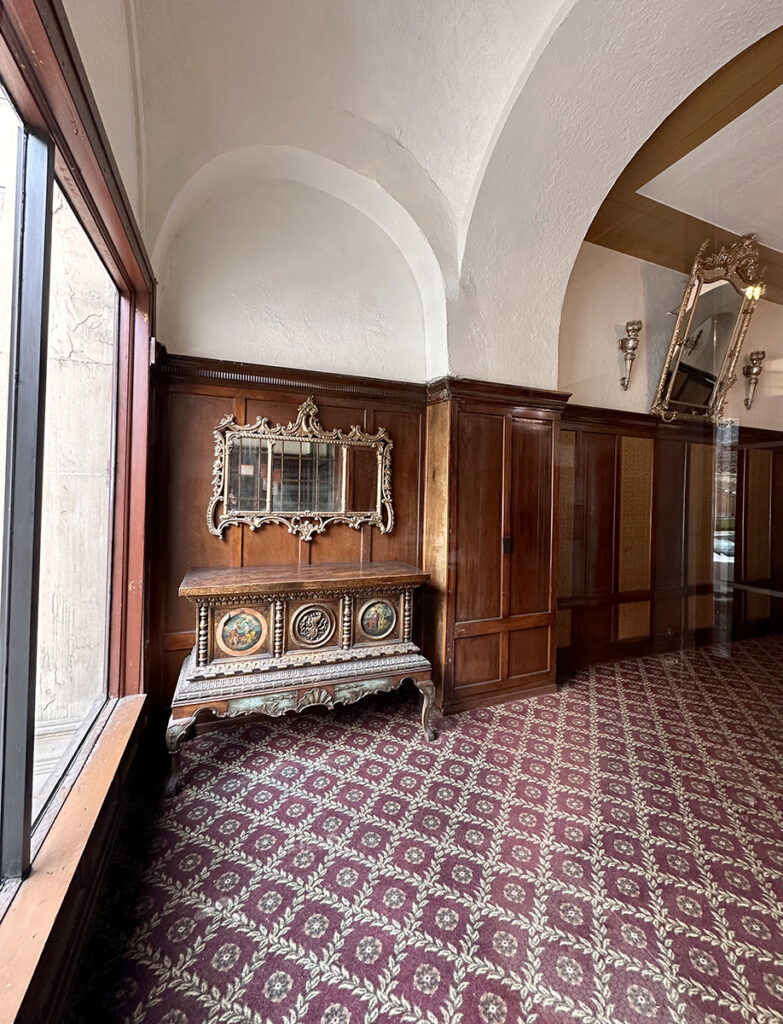
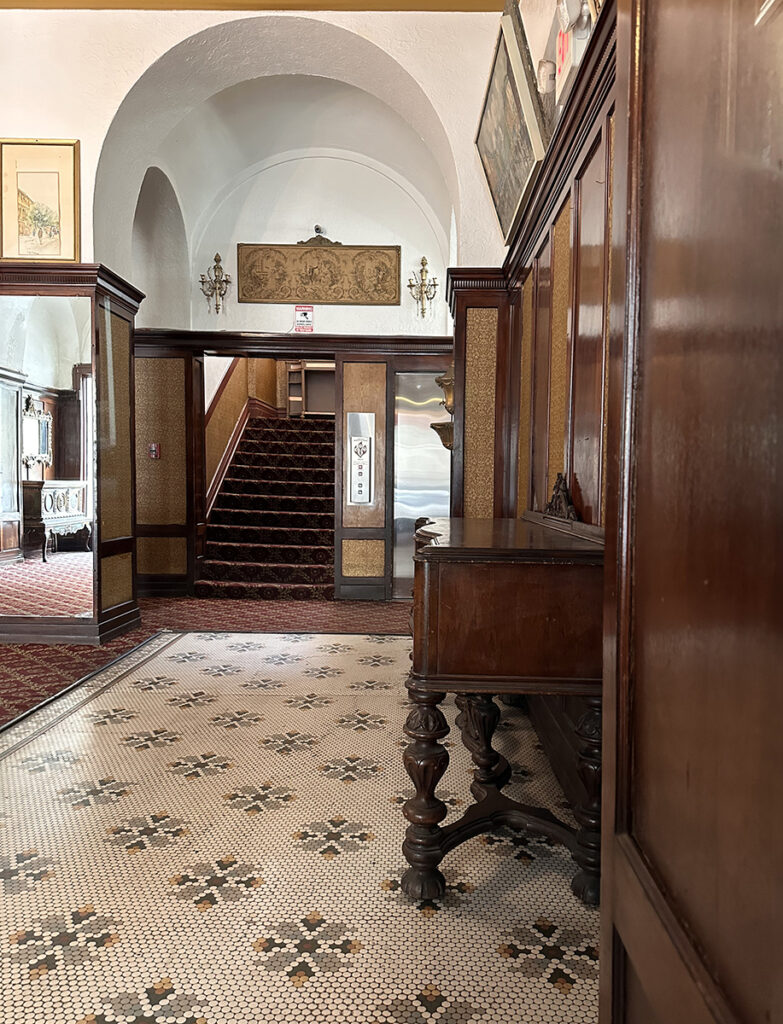
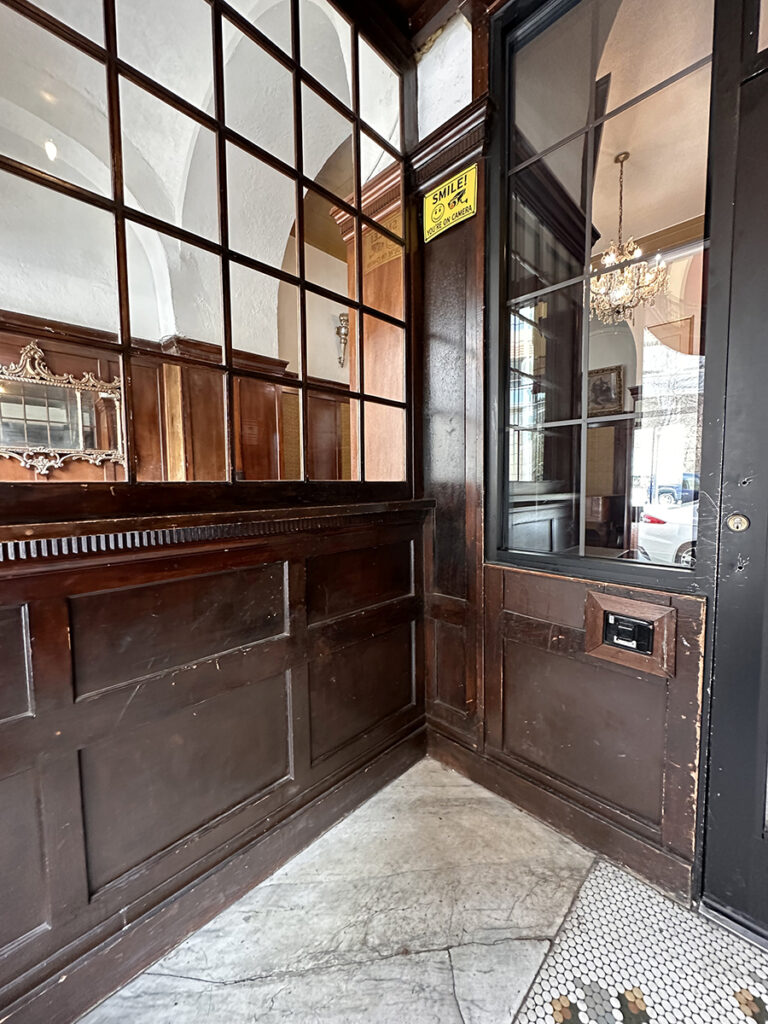
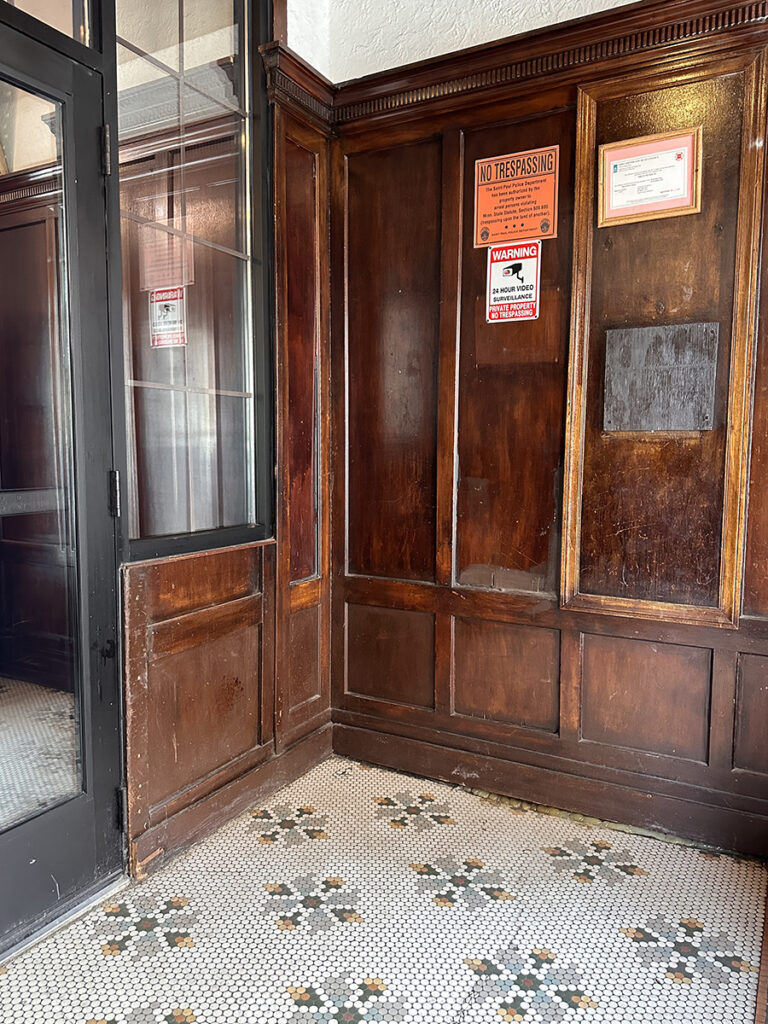
An uncertain future
I’d be lying to you if I said that the old Colonnade is safe from the threat of demolition and thriving at this end of St. Peter. It’s showing signs of neglect and likely hiding itself to protect itself again.
So what’s next? No one knows. The building simply exists, and thankfully so. It’s a beautiful piece of history that may not be missed by the masses but missed by us history lovers for sure. People may recognize this gem and find a unique way to breathe life into this building again. I’d love to see it shine. You can see the building at 538 St. Peter Street.

Comments are closed.